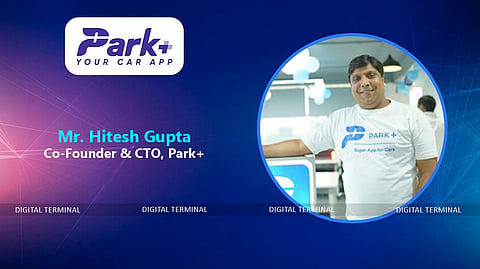How Tech Recruiters Hire The Best Talent
Authored by Mr. Hitesh Gupta, Co-founder & CTO, Park+
Tech created more jobs in the rise of the pandemic, than any other sector. Maintaining a hiring exclusion, while hiring the best talent at bulk was propped by the fact that recruitment teams could offer competitive compensation packages. With a rise in remote work, Naukri.com reported a 42% growth in the technology hiring. However, what followed, were a series of layoffs suggested that maybe the flame of recruitment burned too bright, and too fast. However, many startups and established companies were able to retain the onboarded personnel.
Beyond just hiring top tech talent, what companies need to concentrate their focus on, is to create hire to retire pipelines. Training talent to retain talent is the most sustainable way of maintaining an edge in the talent market. A considerable fraction of a company’s tech talent will come from within the organization. Being privy to the available tech architecture of the organization along with encouraged multichannel continuous learning shall create the sharpest of tech minds in the industry. So, it is with well-executed policies of attraction and retention, that gives tech recruiters access to the top percentile of employable tech candidates, in the market.
Pathways To Attract Top Tech Talent
Factors beyond compensation take precedence in attracting the top talent, as stated in McKinsey’s 2022 Survey Report. While career development and advancement potential makes 52% of employees accept a new job offer, only 45% accept new job roles due to compensation and financial-related factors. This dissonance speaks on the perceived opportunity cost of not switching to career enriching job roles, that recruiters need to fulfil. HR and top management need to create potent avenues on-the-job, that realize reskilling and upskilling opportunities relevant to digital and tech talent.
The first pathway to do so, is by expediting talent recruitment processes. Strong candidates display ambition and possess a multitude of opportunities. Create an interview and assessment strategy that can facilitate a decision within a single day. Prior to the candidate's interview, evaluate their skill set using resources like Hacker Rank. Also create postings on non-traditional channels. For instance, curated websites like GitHub; and being active on hackathons.
Second pathway is presenting an Employee Value Proposition (EVP) to top ranked talent. Be mindful that you, as a recruiter, are being interviewed too. What you can offer as an employer and an incubator of professional growth, will also be put to the scale, aside from general factors of compensation and hybrid working models. Thus, devising a cogent EVP built on “on the ground” programmes can help attract cream tech talent. This also enables defining the brand’s market value. Finding a potential tech team and putting forward the brand mission and vision is a must. Recruiters’ thought processes may differ from preferred candidates, but candidates’ skill sets should match the brand’s vision.
Third, encouraging a non-traditional career pathway and recruiting people from non-tech backgrounds. Technology is as volatile as it is visionary. Restricting resume filters to traditional 4-year CS degree candidates, while ignoring candidates who concentrated efforts in developing job-ready tech skills, will only lead to missed opportunities. Tech courses are abundant and so easily accessible for a reason- which is to expedite tech advancement. There is no limit to what you can learn and create with tech fluency, and coupling that with non-traditional backgrounds of psychology, marketing, public relations, sociology, healthcare, linguistics, etc. can help companies create agile, flexible, integrated tech solutions that are disruptive, to say the least.
These methodologies can be coupled with employer initiatives like rotational upskilling across department, encouraging peer to peer learning networks, gamifying upskilling by hosting code competitions, developing tenured training programmes that involve teaching full-stack development principles, including non-tech personnel gaining tech fluency; and creating prerecorded courses for cloud, cybersecurity, data, machine learning, AI, mobile and software engineers. These actionable practises need to be coupled with top management growing intentional in establishing an organizational motive to eliminate meaningless toil and bad practices, that certainly repels away top talent.


